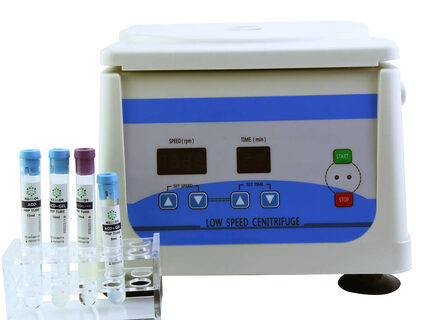Platelet-rich plasma (PRP) is a popular treatment in regenerative medicine that uses a patient’s own blood to stimulate healing and repair in various tissues. To prepare PRP, blood is collected from the patient and then centrifuged to concentrate the platelets, growth factors, and other healing factors in the plasma. However, the optimal platelet concentration for PRP preparation is still a topic of debate among researchers and clinicians.
The platelet concentration in PRP can vary depending on the centrifugation parameters used, such as the duration and g-force. A higher g-force or longer duration of centrifugation can lead to a greater concentration of platelets in the PRP. However, it is important to note that a higher platelet concentration does not necessarily mean better clinical outcomes.
Studies have investigated the effects of different g-forces and durations of centrifugation on PRP platelet concentrations. One study found that centrifugation at 1500 g for 10 minutes resulted in a mean platelet concentration of 3.3 times baseline, while centrifugation at 400 g for 10 minutes resulted in a mean platelet concentration of 2.5 times baseline. Another study found that centrifugation at 1200 g for 10 minutes resulted in a mean platelet concentration of 4.8 times baseline, while centrifugation at 2400 g for 5 minutes resulted in a mean platelet concentration of 6.5 times baseline.
While higher platelet concentrations may be desirable for some applications, it is important to consider the potential risks and benefits. Higher concentrations of platelets can lead to increased cytokine release and potential pro-inflammatory effects. Additionally, excessively high concentrations of platelets can lead to poor injectability and potentially cause tissue damage.
In summary, the optimal platelet concentration for PRP preparation remains a topic of ongoing research and debate. The appropriate platelet concentration may vary depending on the specific application and the patient’s individual needs. Clinicians should carefully consider the centrifugation parameters used to prepare PRP and weigh the potential risks and benefits of higher platelet concentrations.








